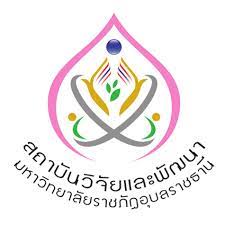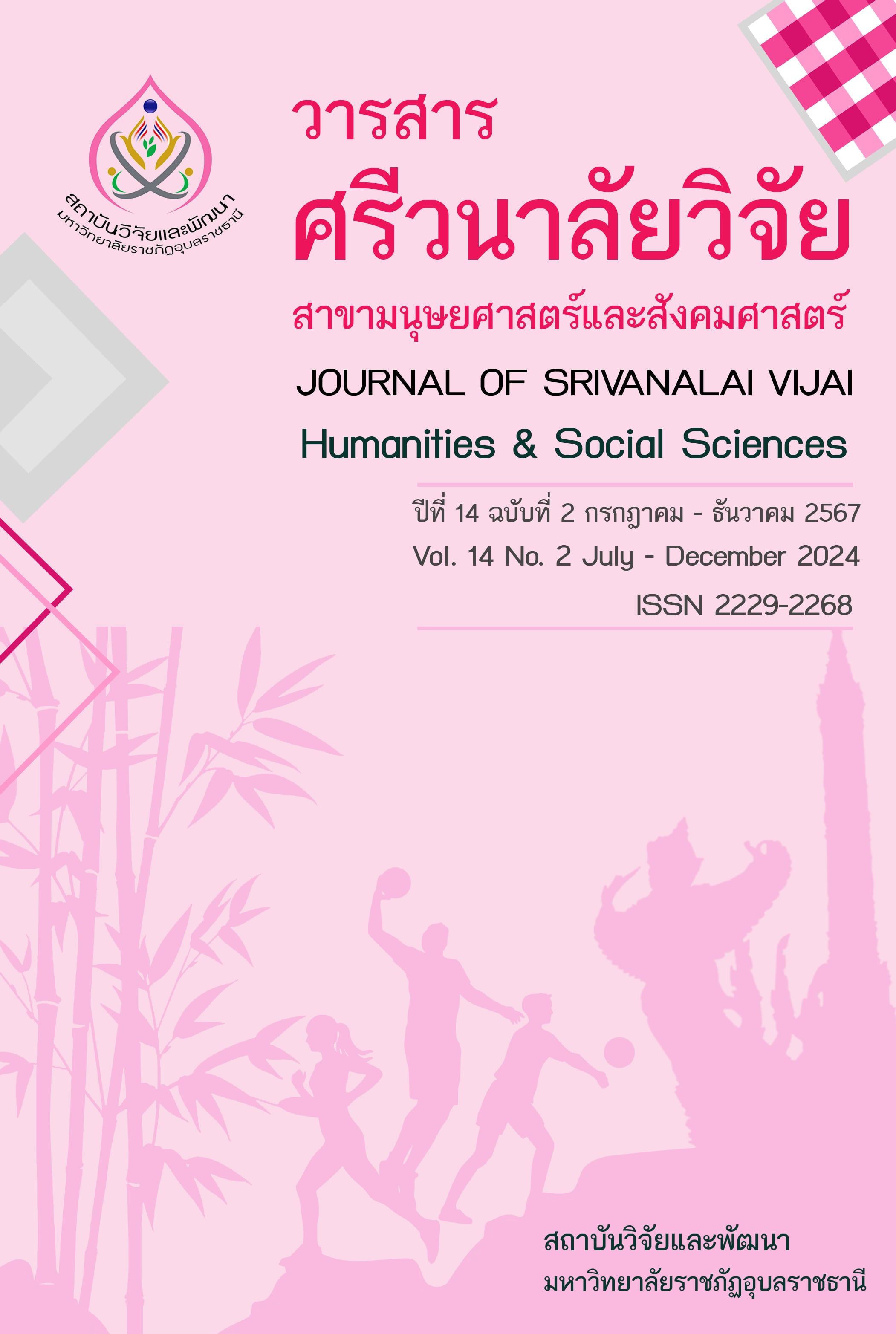เทคโนโลยีความเป็นจริงเสริมในแง่ของการเป็นสื่อการจัดการเรียนรู้สังคมศึกษา
Main Article Content
บทคัดย่อ
บทความวิชาการนี้มีวัตถุประสงค์เพื่อเสนอแนวทางการศึกษาเรียนรู้ด้วยตนเองผ่านสื่อเทคโนโลยี
ความเป็นจริงเสริมในบริบทของการจัดการเรียนรู้สังคมศึกษา โดยเป็นการนำสื่อเทคโนโลยีเข้ามามีบทบาท
ในการถ่ายทอดองค์ความรู้และประเมินผลการเรียนรู้ของผู้เรียน ซึ่งเป็นไปในลักษณะของการศึกษาบทเรียน
ด้วยตนเองผ่านสื่อเทคโนโลยีความเป็นจริงเสริม ที่สามารถควบคุมเนื้อหาหรือเลือกเรียนรู้ได้ตามศักยภาพของตนเอง โดยไร้ข้อจำกัดในเรื่องของสถานที่และเวลา อีกทั้งสามารถเข้าถึงบทเรียนและทบทวนเนื้อหาได้อย่างไม่จำกัด นอกจากนี้ ผู้สอนยังสามารถติดตามการเรียนรู้ ตลอดจนประเมินผลการเรียนรู้ของผู้เรียนได้ผ่านเทคโนโลยีสื่อข้างต้น อีกทั้งมีข้อดีที่แตกต่างจากสื่อประเภทอื่น ๆ อย่างเด่นชัด คือเป็นแพลตฟอร์มที่สามารถรวมสื่อต่าง ๆ เข้าไว้ด้วยกันได้อย่างหลากหลาย ฉะนั้นการนำสื่อเทคโนโลยีความเป็นจริงเสริมมาใช้ร่วมกับการเรียนการสอน จึงส่งผลทำให้เกิดการเสริมสร้างประสบการณ์การเรียนรู้ในรูปแบบใหม่ ที่ผู้เรียนสามารถทำความเข้าใจเนื้อหาของบทเรียนได้ง่ายขึ้น ผ่านการนำเสนอข้อมูลสารสนเทศที่แสดงผลออกมาได้ในหลากหลายรูปแบบ ซึ่งการเน้นใช้เทคโนโลยี
เข้ามาสนับสนุน เพื่อให้ผู้เรียนแต่ละคนมีบทบาทในการจัดการเรียนรู้ด้วยตนเอง นับว่ามีส่วนช่วยส่งเสริมและสนองตอบต่อความแตกต่างระหว่างบุคคลของผู้เรียนได้เป็นอย่างดี จึงเหมาะที่จะนำมาประยุกต์ใช้ในลักษณะ
ของสื่อการเรียนรู้ด้วยตนเองหรือผสมผสานร่วมกับการจัดการเรียนรู้ในรูปแบบต่าง ๆ ได้อย่างมีประสิทธิภาพ
Article Details
เอกสารอ้างอิง
กิดานันท์ มลิทอง. (2536). เทคโนโลยีการศึกษาร่วมสมัย. (พิมพ์ครั้งที่ 2). กรุงเทพฯ : ภาควิชาโสตทัศนศึกษา, จุฬาลงกรณ์มหาวิทยาลัย.
กิดานันท์ มลิทอง. (2548). เทคโนโลยีและการสื่อสารเพื่อการศึกษา. กรุงเทพฯ: ศูนย์หนังสือแห่งจุฬาลงกรณ์มหาวิทยาลัย.
ชัชชญา พีระธรณิศร. (2563). ความท้าทายการจัดการศึกษาในยุค Disruptive Change ของผู้บริหารสถานศึกษา. ศึกษาศาสตร์สาร มหาวิทยาลัยเชียงใหม่, 4(2), 126-139.
ณัฐญา นาคะสันต์ และเรืองวานิช ศุภรางค์. (2559). Augmented Reality : เติมชีวิตให้สื่อสิ่งพิมพ์ทางการศึกษา. วารสารร่มพฤกษ์, 34(2), 33-50.
ทับทิมทอง กอบัวแก้ว. (2563). รูปแบบการพัฒนาแหล่งเรียนรู้ออนไลน์ด้วยกระบวนการจัดการความรู้ของนักศึกษาวิชาชีพครู มหาวิทยาลัยราชภัฏสวนสุนันทา. วารสารครุศาสตร์สาร, 14(1), 80-99.
ทิศนา แขมมณี. (2563). ศาสตร์การสอน : องค์ความรู้เพื่อการจัดกระบวนการเรียนรู้ที่มีประสิทธิภาพ.
(พิมพ์ครั้งที่ 24). กรุงเทพฯ : สำนักพิมพ์แห่งจุฬาลงกรณ์มหาวิทยาลัย.
ธัญญาพร เจียศิริพันธ์. (2560). การพัฒนาชุดการสอนแบบความเป็นจริงเสริมในการเรียนโดยใช้สถานการณ์จำลองด้วยการเรียนรู้จาก การจัดกระทำเพื่อส่งเสริมความสามารถในการคิดวิเคราะห์ของนักเรียนระดับชั้นมัธยมศึกษาตอนต้น. วารสารครุศาสตร์ จุฬาลงกรณ์มหาวิทยาลัย, 45(1), 70-87.
ธารทิพย์ รัตนวิจารณ์ และชนิดา พงษ์สนิท. (2559). โลกเสมือนจริงที่กลายเป็นโลกสมจริง ในภาคอุตสาหกรรมการผลิต. วารสารการสื่อสารและการจัดการ นิด้า, 2(3), 97-114.
นิพนธ์ บริเวธานันท์. (2552). Augmented Reality เมื่อโลกความจริงผนวกเข้ากับโลกเสมือน. สืบค้นจาก http://www.ebooks.in.th
ภควัต จันทรรัศมี, ชัชวาล ชุมรักษา และเรวดี กระโหมวงศ์. (2563). การพัฒนาแอปพลิเคชันความเป็นจริงเสริมในคู่มือการใช้โสตทัศนูปกรณ์ สำหรับบุคลากรมหาวิทยาลัยเทคโนโลยีราชมงคลศรีวิชัยสงขลา. วารสารการศึกษาศาสตร์ มหาวิทยาลัยทักษิณ, 20(2), 76-93.
รักษพล ธนานุวงศ์. (2558). สื่อเสริมการเรียนรู้ โลกเสมือนผสมโลกจริง (Augmented Reality) เรื่องการจมและการลอย. สืบค้นจาก http://secondsci.ipst.ac.th
วิวัฒน์ มีสุวรรณ์. (2554). การเรียนรู้ด้วยการสร้างโลกเสมือนผสานโลกจริง. วารสารศึกษาศาสตร์ มหาวิทยาลัยนเรศวร, 13(2), 119-128.
วิวัฒน์ มีสุวรรณ์. (2556). การออกแบบและพัฒนาสื่อการเรียนรู้ด้วยเทคโนโลยีออคเมนเต็ดเรียลลิตี้ = Augmented reality. พิษณุโลก : มหาวิทยาลัยนเรศวร.
วิวัฒน์ มีสุวรรณ์. (2558). การพัฒนาสื่่อ Augmented Reality ด้วยโปรแกรม Processing และ OpenSpace3D. กรุงเทพฯ : สำนักพิมพ์แห่งจุฬาลงกรณ์มหาวิทยาลัย.
ศูนย์เทคโนโลยีอิเล็กทรอนิกส์และคอมพิวเตอร์แห่งชาติ. (2559). 30 Years of NECTEC = 30 เนคเทค 3 ทศวรรษ พัฒนาไทย งานวิจัย ใช้ได้จริง. ปทุมธานี : ศูนย์เทคโนโลยีอิเล็กทรอนิกส์และคอมพิวเตอร์แห่งชาติ.
Oleg Boiko. (2022). Location Based AR. Retrieved from https://wear-studio.com/location-based-ar/
The intellify. (2020). Object Based AR. Retrieved from https://theintellify.com/object-detection-based-ar-solution/


